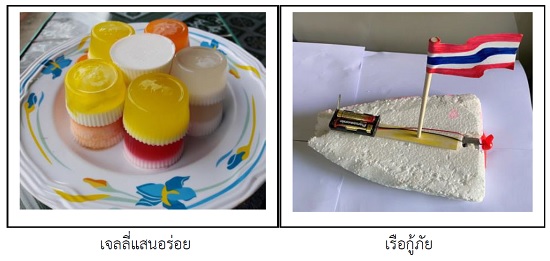DEVELOPING AND EVALUATING A LEARNING MANAGEMENT SYSTEM OF STEAM EDUCATION FOR ENHANCING CREATIVE THINKING OF STUDENTS IN SMALL ELEMENTARY SCHOOLS
DOI:
https://doi.org/10.14456/nrru-rdi.2022.7Keywords:
Learning management system, STEAM education, Creative thinking, Learning achievementAbstract
Creative thinking skills are one of the 4Cs of the 21st century that young people use in their work. The two purposes of this research were to develop a learning management system of STEAM education for enhancing the creative thinking of students and to study the effect of using the learning management system. The 47 students in grades 5 and 6 in a small elementary school were selected to be the sample by simple random sampling. A learning management system assessment form with a very high level of internal consistency, an achievement test with a high confidence value, a creativity assessment test, and STEAM education lesson plans were used as research tools. Data were collected by organizing learning activities in accordance with STEAM education's four plans. The mean, standard deviation, and t-test were used to analyze the data. According to the findings, a learning management system for enhancing creativity thinking has three components: 1. teaching objectives, 2. teaching and learning activities, and 3. evaluations. This learning management system includes a 7-step STEAM education teaching model, as well as four activity sets: 1) skyscraper activities, 2) rescue boat activities, 3) fantastic turbine activities, and 4) delicious jelly activities. Results of using the learning management system according to the STEAM education were as follows: learning achievement was significantly higher than before; learning achievement was significantly higher than the 70% criterion; and creative thinking was significantly higher than before. Therefore, it will be beneficial to smaller schools with fewer science and math teachers.
References
Bishop, M., Reiser, S., Taylor, A. M., Rein, J. A., & Hall, J. (2007). The Instructional System Design Model: A Framework for Development of a Web-Based Program. JBC, 32(3), 44-45.
Kaemmanee, T. (2018). Pedagogy Knowledge for learning process of efficiency (22th ed.). Bangkok : Chulalongkorn University. (In Thai)
Keeratichamroen, W. (2017). 21st Century Teaching Skills and Techniques. Nakhon Ratchasima : Nakhon Ratchasima Rajabhat University. (In Thai).
Khuana, T., & Khuana, K. (2018). Learning Management for Promoting the Creativity Thinking in Educational Production: Thailand Education 4.0. Journal of Research and Development Institute, Rajabhat Maha Sarakham University, 5(2), 325-342. (In Thai)
Klubsakun, O., & Phonak, D. (2020). A Development of the Education Model to Enhance Creative Thinking in Digital Maketing. Journal of Suvarnabhumi Institute of Technology, 6(2), 140-151. (In Thai)
Lefrancois, G. R. (1980). Psychology. California : Wadsworth Publishing Company.
Loughary, J. W. (1968). Instructional System-Magic or method?. Washington, D.C. : Association for Supervision and Curriculum Development, NEA.
Maeda, J. (2013). STEM+Art=STEAM. The STEAM Journal, 1(1). Retrieved July 27, 2021, from http://scholarship.claremont.edu/steam/vol1/iss1/34 DOI: 10.5642/steam.201301.34
Mahnaz, M. (1996). Instructional Design Models and Research on Teacher Thinking: Toward a New Conceptual Model for Research and Development. Retrieved May 16, 2021, from https://files.eric.ed.gov/fulltext/ED397822.pdf
Marattana, C., & Keeratichamroen, W. (2018). A Study of Learning Outcome on Materials and Properties of Grade 5 Students’ Learning Unit Using STEM Education. NRRU community Research Journal, 12(3), 149-162. (In Thai)
Office of the Basic Education Commission. (2015). Strategic Plan for Small School Development 2015-2018. Bangkok : Agricultural Cooperative Society of Thailand. (In Thai)
Orapiriyakul, S. (2019). STEAM EDUCATION: Innovative Education Integrated into Learning Management. Journal of Research and Curriculum Development, 9(1), 1-16. (In Thai)
Phanmanee, A. (2014). Training for creative thinking. Bangkok : Chulalongkorn University. (In Thai)
Phanpool, S., Dokmai, P., & Kutthalaeng, N. (2020). A study of creativity thinking and attitude towards science using STEAM Education of grade 4 students. The 7th NEU National Conference 2020 (NEUNC 2020), Retrieved August 7, 2021, from http://webcache.googleusercontent.com/search?q=cache:zSuj397f4B0J:psneu.neu.ac.th/neunic/home/journal_file/423.pdf+&cd=1&hl=en&ct=clnk&gl=th (In Thai)
Phonnong, I., & Keeratichamroen, W. (2021). Developing Instructional Model Based on STEAM Education for Enhancing Creative Thinking Skill of Students in Small Elementary Schools. Ratchaphreuk Journal, 19(3), 19-33. (In Thai)
Siripattrachai, P. (2013). STEM education and 21st century skills development. Executive journal Bangkok University, 33(2), 49-56. (In Thai)
Srisa-ard, B. (2011). Preliminary research (9th ed.). Bangkok : Suviriyasan. (In Thai)
Susaoraj, P. (2010). Thinking Development (4th ed.). Bangkok : 9119 Technical printing. (In Thai)
Tayea, F., Mophan, N., & Waedrama, M. (2017). Effect of STEAM Education on Science Learning Achievement, Creative Thinking and Satisfaction of Grade 5 Students towards the Learning Management. Princess of Naradhiwas University Journal of Humanities and Social Sciences, 4(2), 1-14. (In Thai)
Thewasutharasakul, C. (2015). Development of instructional physics model corresponding to context of higher education institution with the educational process through lessons. Chonburi: Burapha University, Research funding from the National Research Council of Thailand Fiscal Year 2014. (In Thai)
Tsurusaki, B. K., Tzou, C., Carsten Conner, L. D. & Guthrie, M. (2017). 5th-7th Grade Girls’ Conceptions of Creativity: Implications for STEAM Education. Creative Education, 8, 255-270.
Uzunboylu, H., & Kosucu, E. (2020). An Evaluation on Instructional Systems Design. International Journal of Learning and Teaching, 12(1), 030-041.

Downloads
Published
How to Cite
Issue
Section
License
Copyright (c) 2022 NRRU Community Research Journal

This work is licensed under a Creative Commons Attribution-NonCommercial-NoDerivatives 4.0 International License.




